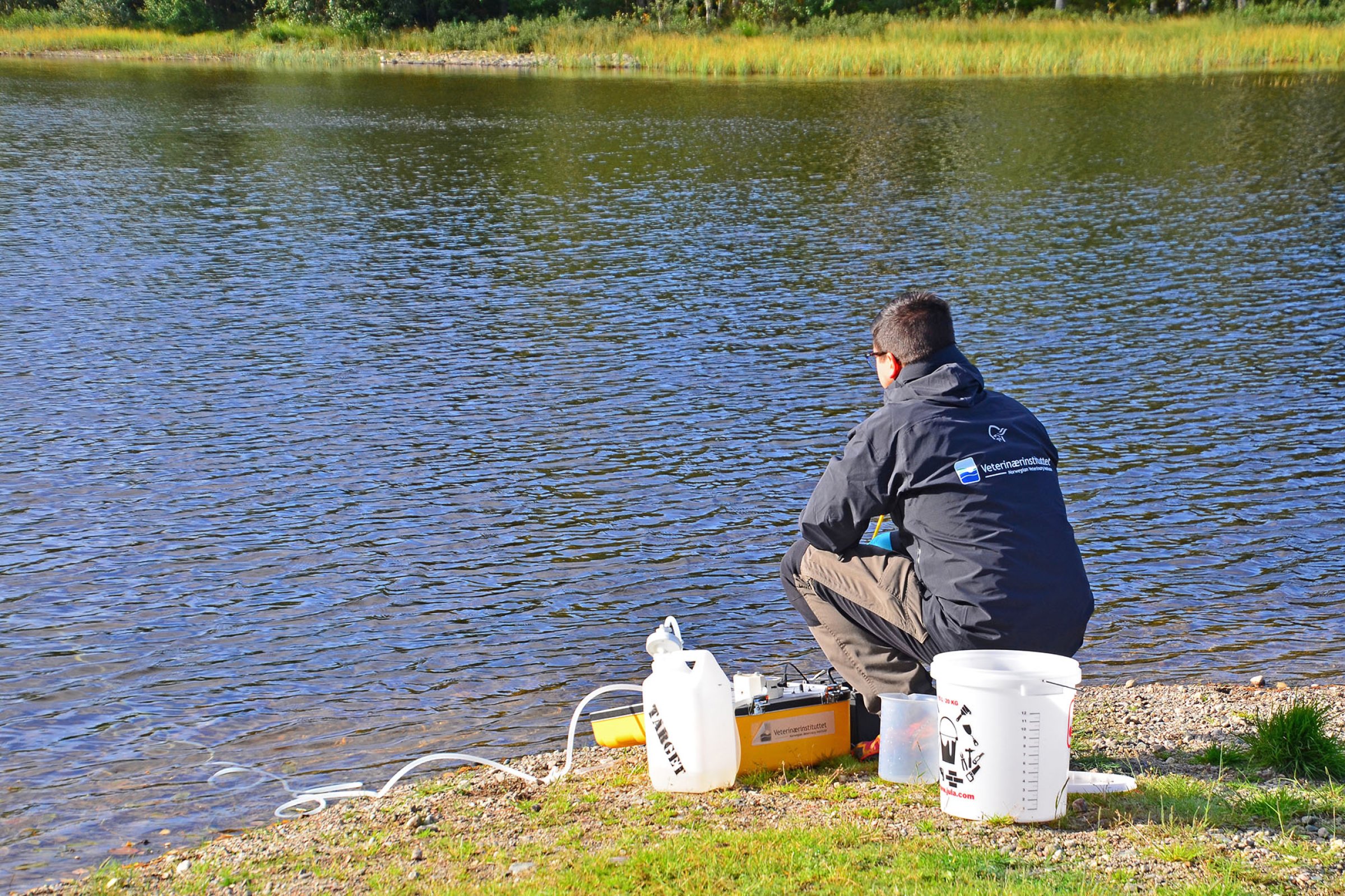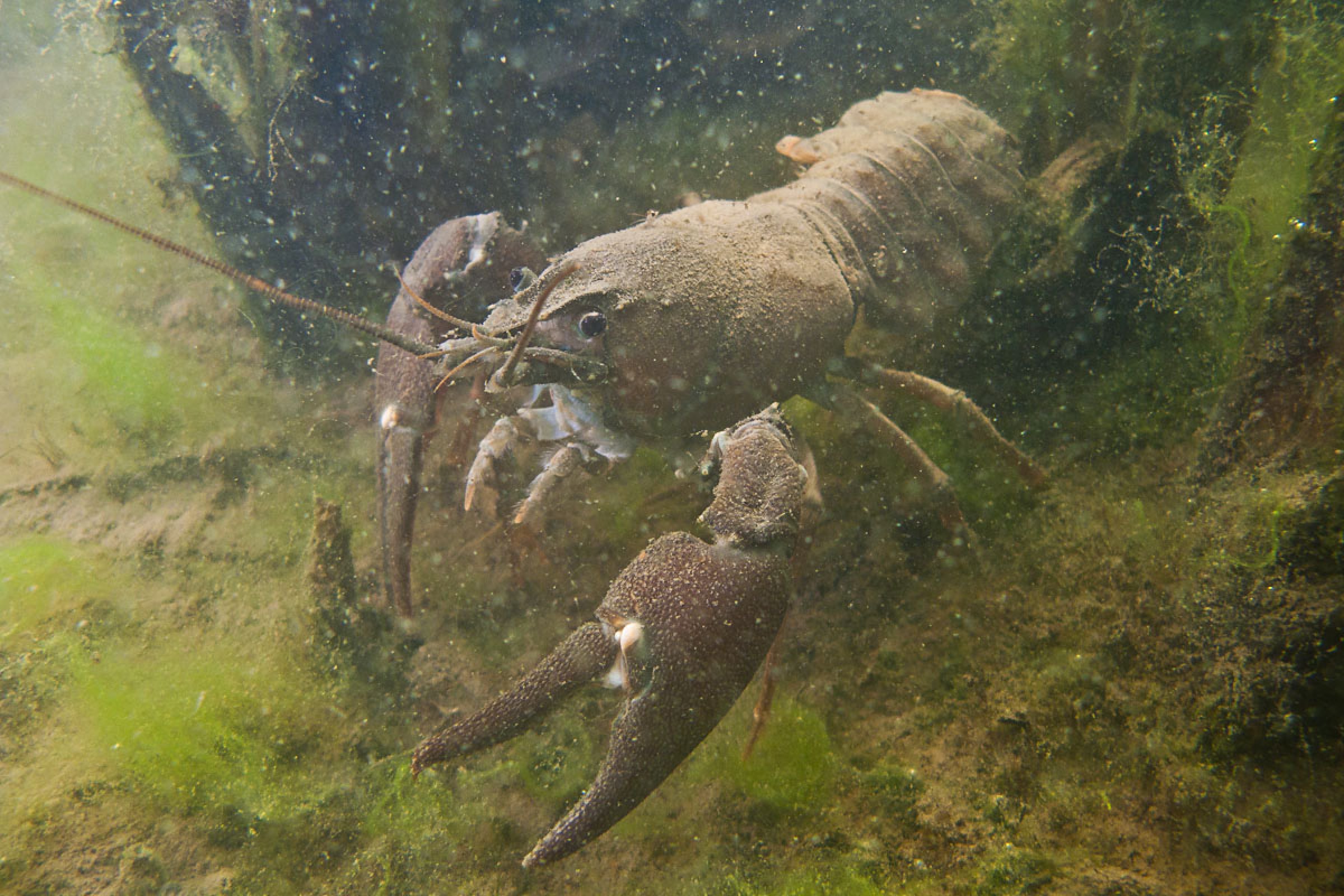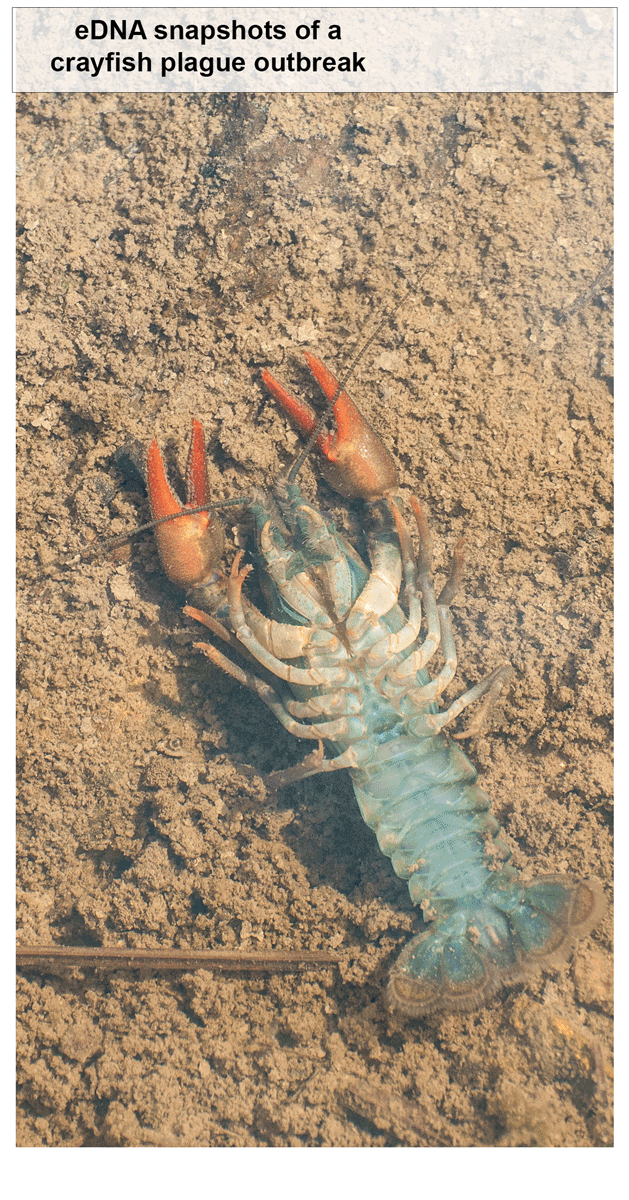

Noble crayfish (Astacus astacus) are macroinvertebrates that can be found in both lotic and lentic freshwater systems across most of Europe. Previously an abundant species, noble crayfish populations have, however, severely declined to the point that this species is now classified as “vulnerable” on the IUCN list, and ”endangered” on the Norwegian red list .
Noble crayfish is native to Europe. Here filmed in its natural habitat in Lake Skårillen in Norway by David A. Strand.
A major threat to noble crayfish and other indigenous crayfish species in Europe is the oomycete Aphanomycis astaci. This fungal-like watermould is the causative agent of crayfish plague, a disease lethal to all native European crayfish species. The high level of threat which this organism poses is reflected in its presence on the IUCN list of 100 of the world’s worst invasive alien species (GISD, 2018). Introduced American crayfish are resistant carriers, and serve as infection reservoirs all over in Europe.
There are still several healthy populations of noble crayfish in Norway, until recently one of them inhabited the Lake Rødenessjøen in the Halden watercourse in Eastern Norway. However, in September 2014 during routine crayfish trapping, illegally introduced Signal crayfish (Pacifastacus leniusculus) were discovered in the lake. Monitoring programs for both noble crayfish, signal crayfish and the crayfish plague pathogen were ordered by the authorities.
Traditionally, crayfish plague monitoring is carried out with cage-experiments. At strategically chosen points, cages with live noble crayfish are submerged in the watercourse. The crayfish are supplied with food and shelter, inspected at regular intervals, and dead crayfish are sent to the Norwegian Veterinary Institute for crayfish plague diagnostics. The cage-method is problematic from an ethical point of view since live crayfish (covered by the Animal welfare act) are condemned to die.
Through the use environmental DNA (eDNA), these problems can be overcome. All organisms shed cells into their surroundings. By looking for fragments of specific genes which are unique to each species, it is possible to detect any given species. This can be achieved by filtering water through a filter and extracting the DNA caught on the filter.
«We took advantage of this tragic situation, since it presented a unique opportunity to compare traditional surveillance with eDNA monitoring, and study the host-pathogen dynamics in terms of eDNA for the first time» explains researcher David A. Strand from the Norwegian Veterinary Institute. Over the course of three years, no less than 304 water samples were taken at 15 separate sites and analysed for eDNA of noble crayfish, the crayfish plague pathogen and its carrier, signal crayfish. In parallel, cages containing noble crayfish were set up at six locations in the watercourse and regularly monitored. Crayfish trapping was also conducted on a yearly basis.
The crayfish plague soon spread upstream in the watercourse. After one year, it had spread over 23 kilometres and the noble crayfish in the cages as well as in the lake died. The following year it was still active in river Hølandselva, but there was no sign of further spread upstream the river. By that time, it had become apparent that eDNA monitoring was indeed able to detect the crayfish plague up to 2-3 weeks prior to the traditional method, and the cage-method was therefore discontinued after 2016 and monitoring from 2017 solely relied on eDNA.
«The most striking result of the eDNA monitoring was the fluctuation observed in the amount of eDNA detected» explains David Strand. «Prior to an infection, only eDNA of noble crayfish was detectable in the water. Once the plague reached a healthy sub-population, it was first detectable at very low levels but then markedly increased as the pathogen creates spores that are emitted from infected and dying crayfish. In parallel, we observed a similar increase in noble crayfish eDNA, probably because dead and decaying crayfish emit large amounts of eDNA. Then eDNA of both targets disappeared rapidly, reflecting the local extinction of the crayfish population».

Time-lapse showing the spread of crayfish plague through parts of the Halden watercourse, including eDNA detection of noble crayfish, signal crayfish and crayfish plague in the period from October 2014 to September 2017.
Researcher Stein Ivar Johnsen from the Norwegian Institute of Nature Research confirms the noble crayfish extinction. “While there were numerous noble crayfish in the lake in 2014 and in previous years, an effort of 2840 trap nights in 2015 did not yield a single noble crayfish”
A direct consequence of this study was the implementation of the eDNA method into the national surveillance program for crayfish plague in Norway in 2016 and the discontinuation of cage-based monitoring in 2017. From 2018, the national surveillance program for noble crayfish also implemented eDNA data as supplementary method. While the noble crayfish population in Lake Rødenessjøen could not be saved, a more animal-welfare friendly approach for monitoring the disease is now in place.
Read the full paper: Monitoring a Norwegian freshwater crayfish tragedy - eDNA snapshots of invasion, infection and extinction in Journal of Applied Ecology.
This article was first published in The Applied Ecologist´s Blog.